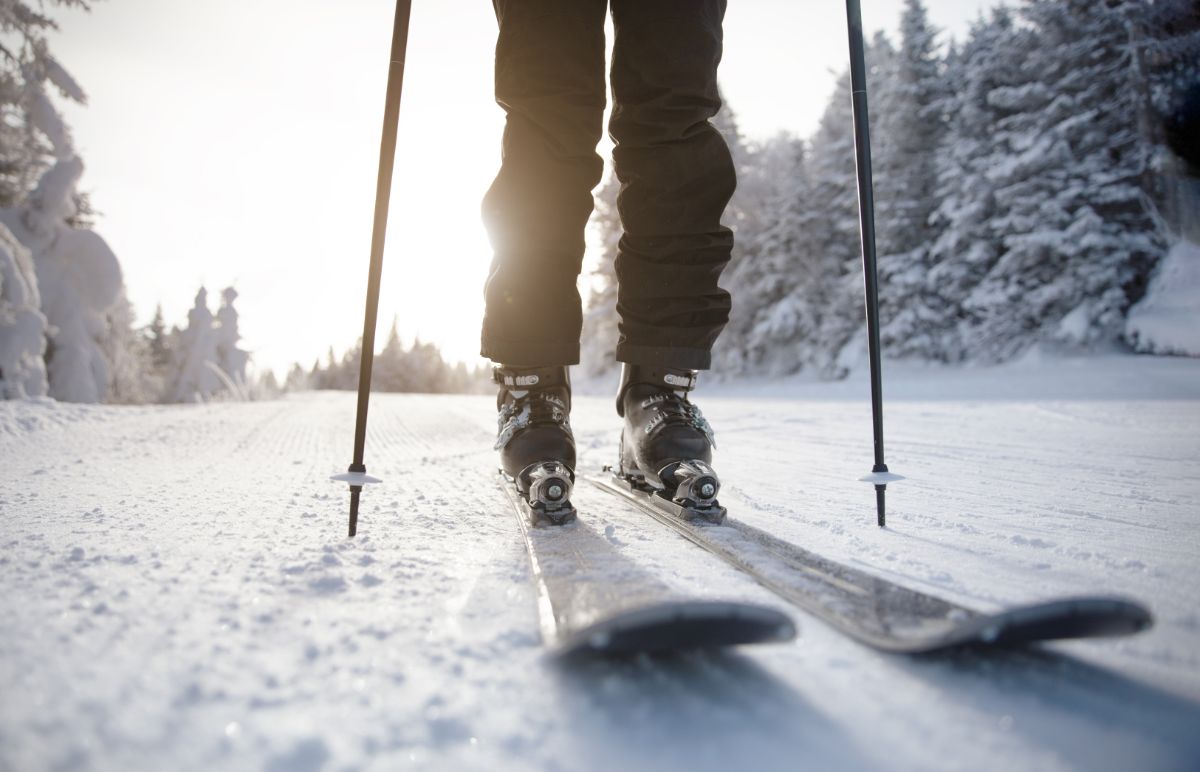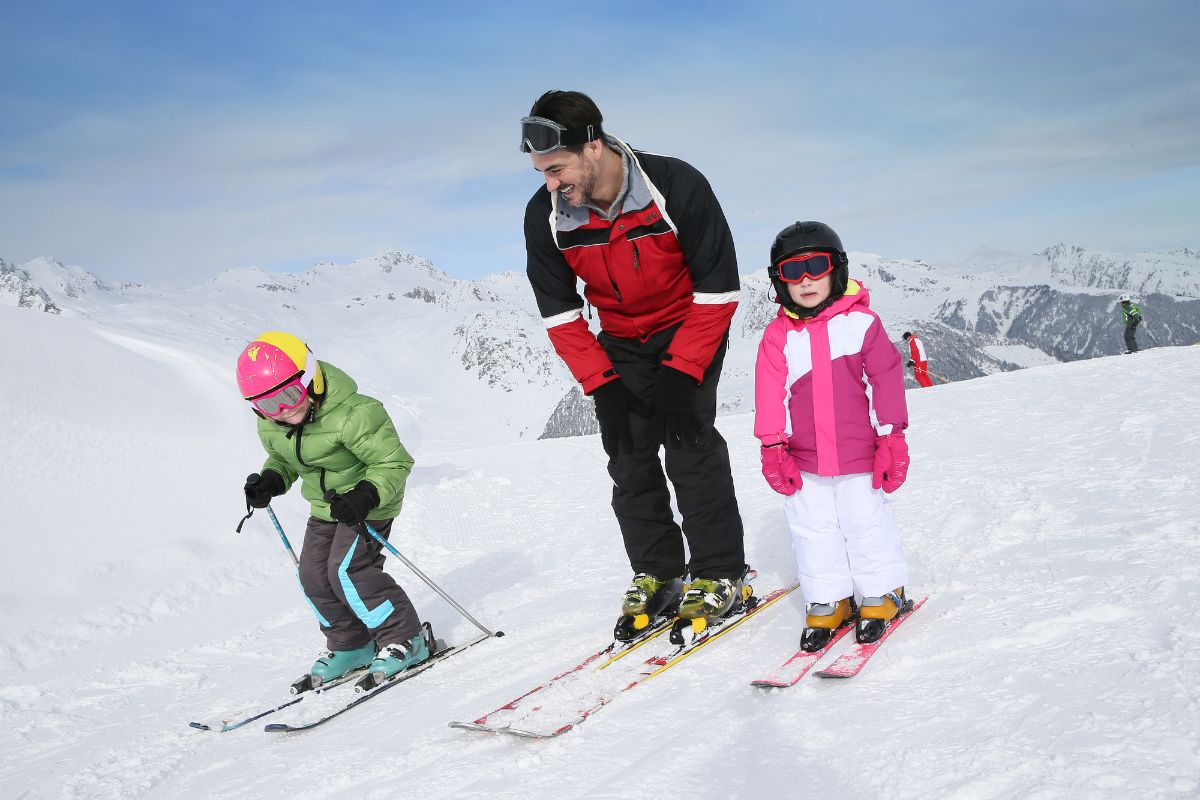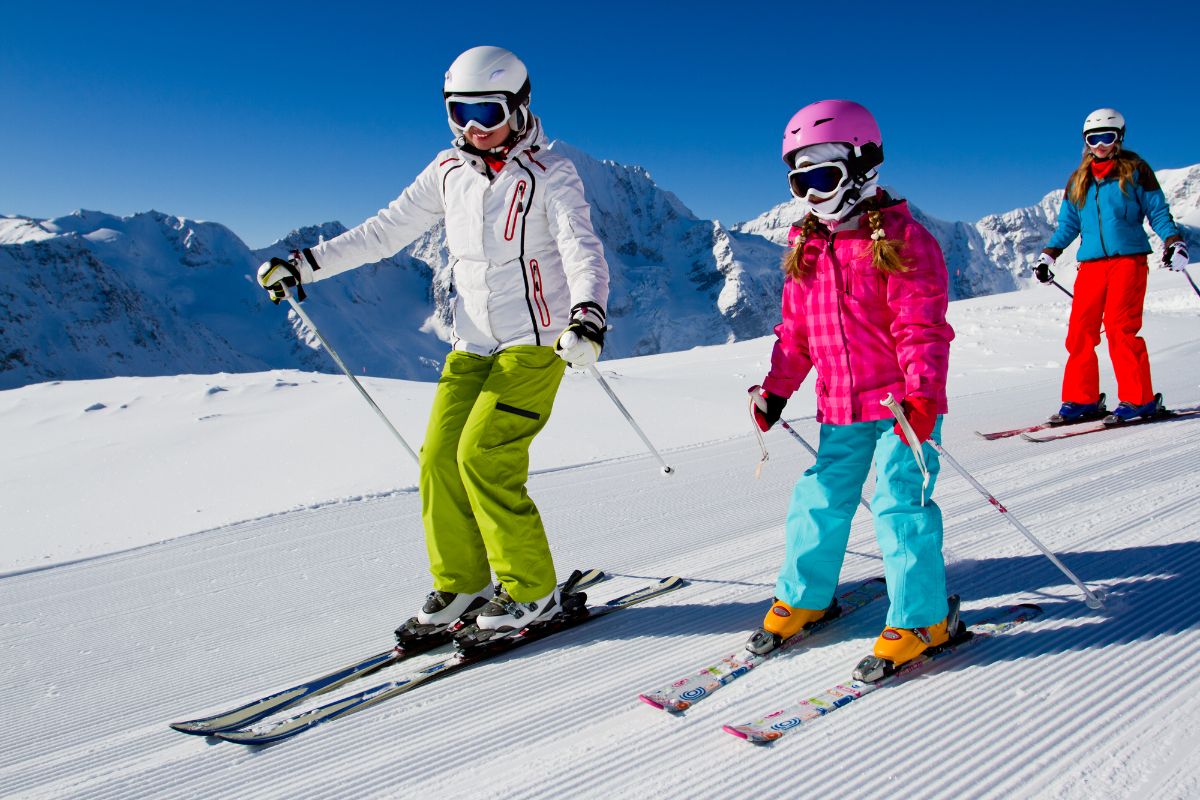
Technically, you can ski without lessons. But I recommend you take skiing lessons with an experienced instructor. It will help you master the basics faster than you can on your own.
I’ve been skiing for decades and have gained more experience and knowledge over the years. I know the importance of proper skiing forms and techniques and how skiing lessons help you learn both.
Thankfully, I’ll highlight some pros related to learning skiing lessons and other helpful information, too. I wish to see you take ski lessons and be a better skier as quickly as possible.
Let’s get started.
Why You Need Skiing Lessons?
Here are some reasons why you need skiing lessons:
Safety

Ideally, learning how to ski isn’t just connecting your turns. Instructors must make sure you learn the necessary skills set to ski safely whenever you hit the slopes. From controlling your speed to riding the chair lift, there are many areas for potential accidents you need to avoid.
Moreover, knees injuries are common in ski accidents. You’ll be taught specific skills to help avoid injuries. But, always set your equipment to avoid unnecessary injuries, too. Taking Skiing lessons helps you master special carving and speed control techniques to help reduce your chances of injuries. Please get trained by a certified and talented ski instructor to be safe.
Faster Improvement
Learning to ski properly helps you avoid forming bad habits that might be challenging to correct later. Using proper technique makes you a better skier, allowing you to perfect your skill faster than if you were left to train alone.
Your instructor is trained to help you work through problems that might hold you from improving. Also, receiving positive feedback along with tricks and tips helps you improve.
Be the Best Version of Yourself
Taking skiing lessons, particularly with a novice, is a great way to enhance your progress. Being a step behind forces you to improve continuously. You might be a skier already but take a lesson often to perfect your skills. Perhaps attempt the terrain park, try skiing backward, or learn to ski on one leg. Definitely, you will improve!
Meet New People

Taking a ski lesson is a fantastic way to meet fellow skiers, hear their tribulations and trials, and learn to shred. Resorts are full of x-Pros, professionally trained instructors, and just dang-good skiers. You will learn so much from them. Some have had more experience and can give you sound advice to improve your skills.
So, befriend other skiers. They can’t hold back if you ask for tricks and tips. Also, skier instructors are welcoming, especially during winter sports. I hope you join their skiing community.
Useful On-Mountain Knowledge
Knowing how to ski isn’t enough. Remember, you aren’t the only one on the mountain. So, take skiing lessons to help you learn everything about skiing, including chair lift regulations and rules and mountain signage and its meaning.
You need to be aware of signs and their meanings to keep yourself and others safe. Just like driving, skiing has traffic rules, too. An instructor will teach how to traverse a one-way trail, where you can congregate and where you cannot, how to merge on trails, and more.
Most beginners accidentally end up on a black diamond run. Luckily, you’ll be instructed on runs that fit your skier’s ability to avoid getting into a risky situation.
Ski Packing List

Many things ran through my head, as I prepared for my first ski trip. I was very excited about the new experience but felt nervous and unsure of what to expect. That’s why I’ve compiled a simple ski packing list to alleviate your stress and keep you safe. Remember some items like helmets, poles, skis, etc. might be rented at most resorts.
Ski Equipment
- Goggles
- Ski boots
- Poles
- Helmet
- Water bottle
- Shovel, transceiver, and probe
- Multi-tool for adjustments and repair
- Day rucksack
Ski Clothing
- Sunglasses
- Warm hat
- Neckwarmer
- Thermal bottoms
- 2 or 3 pairs of ski socks
- Waterproof gloves
- 2x fleeces
- 2x thermal tops
Nice to Have
- Fully charged mobile phone, external battery and headphones
- Snowshoeing trail guidebook
- Sports equipment for other outdoor activities like hiking poles, Nordic skiing gear, snowshoes, etc.
- GPS navigation device
- Travel money, tickets, and passport
- High energy snacks like chocolate bars
- Aftersun moisturizer
- Toiletries including toothbrush
- Snowchains if driving
- Any medication like painkillers
- Earplugs
Tips for Beginners
Here are some tips for beginners to make your experience fun and memorable while skiing.
Dress in Layers

Avoid wearing the wrong clothes while skiing. Being too cold or too hot might ruin your day, too. Therefore, ensure you dress in extra layers to help avoid this. You might start your day cozy and warm. But if you get too hot, you can remove a jacket or a jumper.
Rent Your Equipment
Don’t stress yourself by buying ski equipment at the moment. First rent as you get a feel for what works best for you and help build your confidence on the slopes.
Protect Yourself from the Sun
The sun burns intensively at altitude. So, to protect your skin from UV rays, please wear a beanie or balaclava to protect your head. Also, jackets and scarves with high collars protect your skin from harmful UV rays.
Work Out Before the Ski Season
Skiing is simply a workout! Therefore, a little light workout before skiing is essential. Workout before ski seasons helps warm up your muscles.
Don’t Ski Alone

As a beginner, avoid skiing alone. Enjoy the company of novices and learn from them as you progress.
Forget the Poles (For Now)
The foundation of skiing is entirely the center of gravity and a correct balance. Just pop your poles down and first perfect your knees and legs’ movement. You don’t need poles particularly when you’re still on a very easy slope.
Wear Goggles and a Helmet
Skiing safely requires many accessories, and I know it might get complicated having all of them. But, don’t forget your helmet and goggles, as they’re two of the most crucial safety gear.
Don’t Fear Falling
Falling means you’re progressing and trying. Falling or failing doesn’t portray inexperience but enthusiasm and passion for trying something out of your comfort zone.
Don’t Give Up
You’ll find skiing inarguably difficult, but don’t give up. Please stick at it, and I promise your resilience, persistence, and determination will reward.
The Best Season to Ski

Usually, there are no prime conditions. It depends on your preferred weather condition. The weather might be less settled in January. So, I recommend it during the cold months. February might also be the best choice because it has the most snowfall accumulation. It’s the peak month for long lift lines.
Also, if you like slushy snow with bluebird springs, head out in March, or wait for April if you prefer long and warm days.
Final Thoughts
For now, that is a quick-fire brief on skiing as a beginner, including the essential information to make your experience remarkable and a little bit easier. Don’t panic, don’t overthink; instead, focus on the excitement and atmosphere. Few things in this freaky world are comparable to an incredible skiing experience, and that, after all, is what matters.
Happy skiing!
